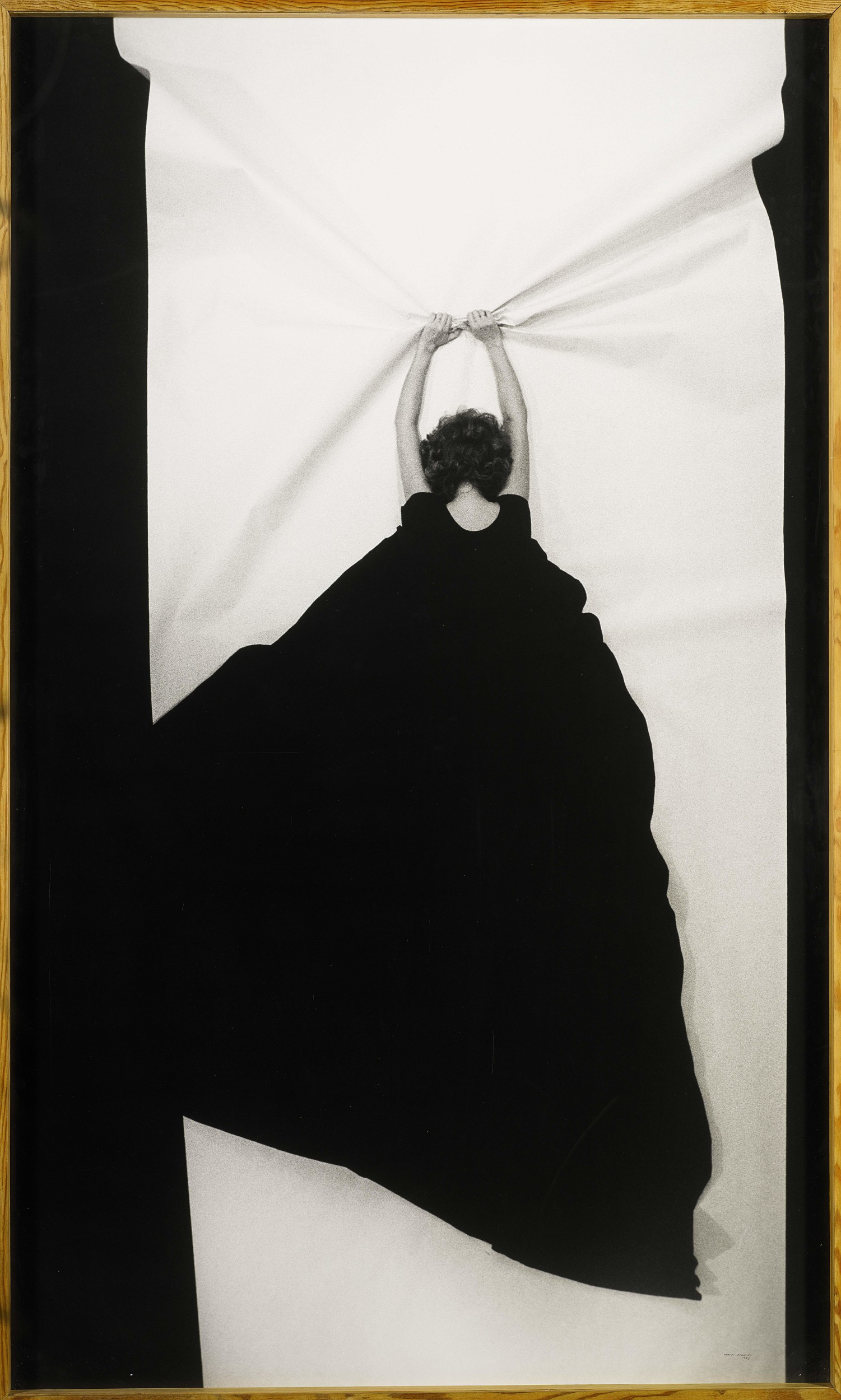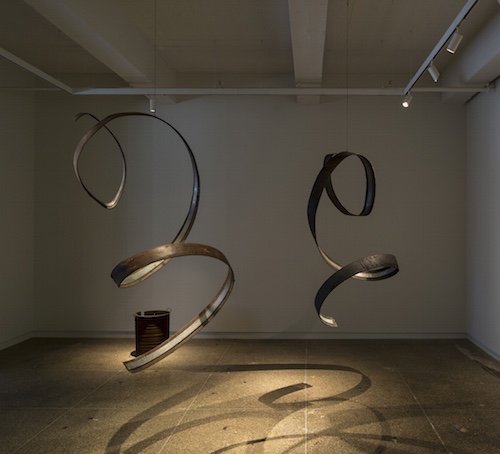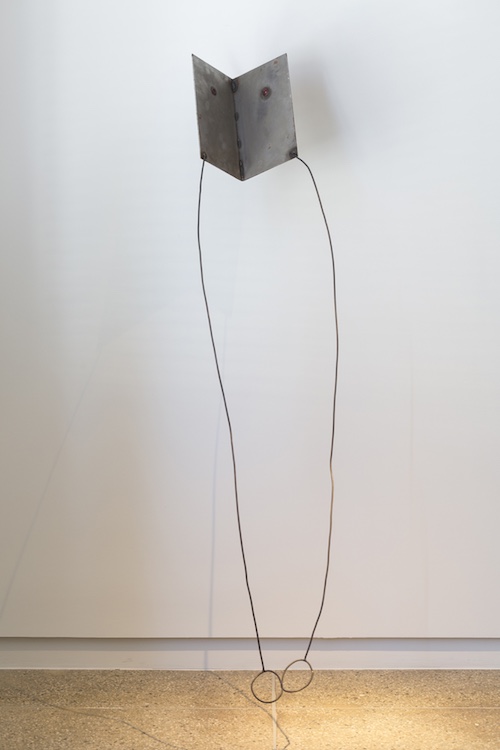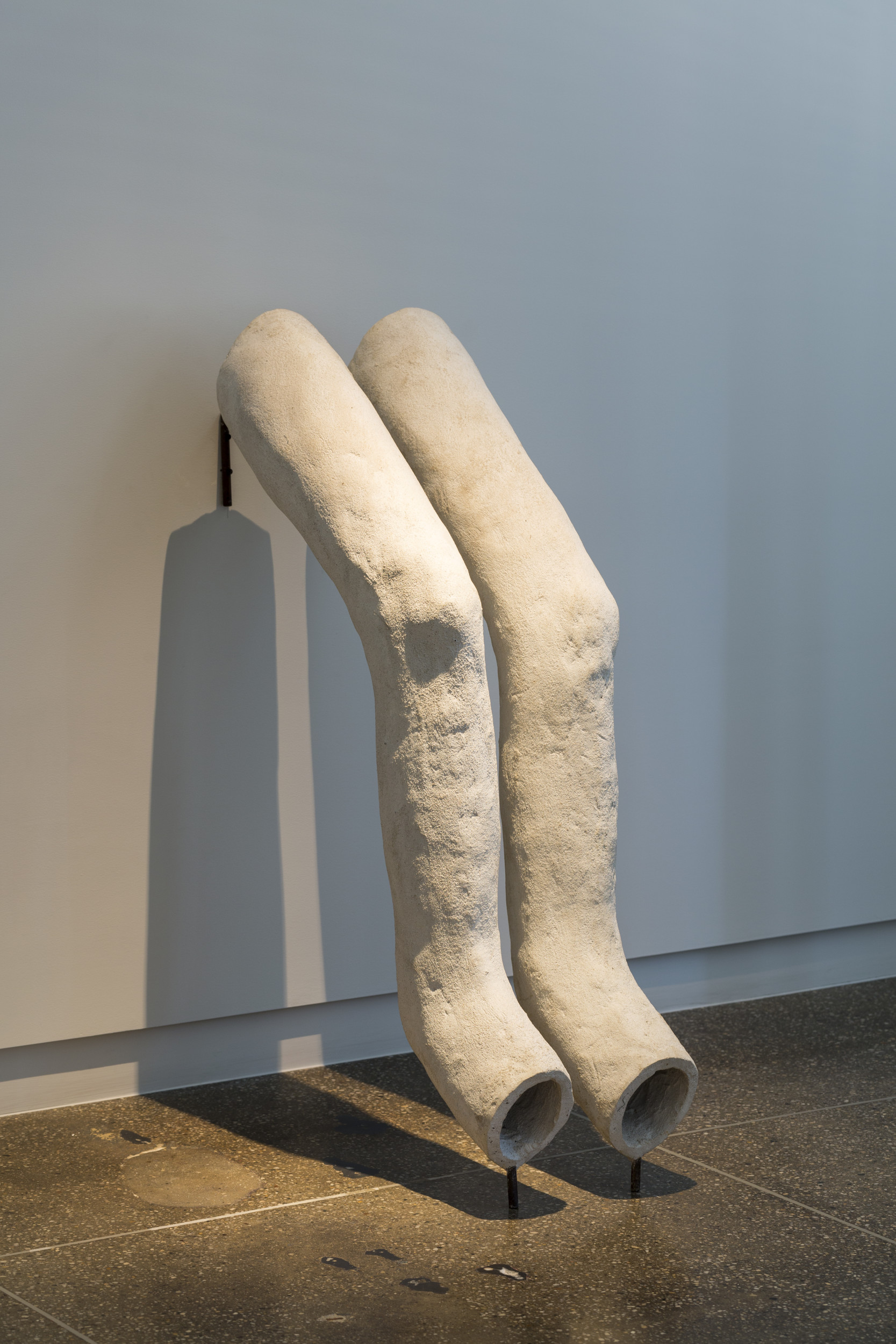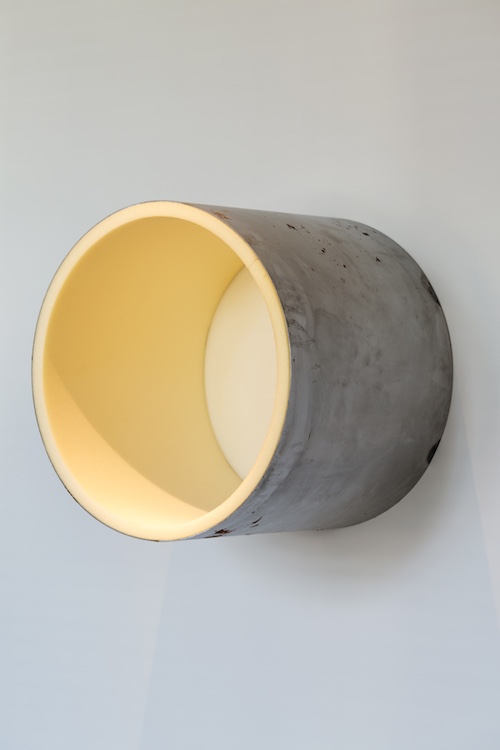Setting
- Helena Almeida
- Miroslaw Balka
Setting is a two-person exhibition by Portuguese artist Helena Almeida (b.1934) and Mirosław Bałka (b.1958) from Poland whose sculptures join Almeida’s photographic work, still relatively unknown in the United States.
The title of the exhibition evokes a stage set. From the microscopic plasma of two hanging spirals to a torn roll of white paper, the space becomes scenery, strewn with elements that engage the viewer. In Bałka’s early work “Remembrance of the First Holy Communion” (1985), he had already explored dissolving boundaries between spectator and actor as to establish an ethos of nonconformity. For Almeida’s part, the use of parody and theatrical games are inherent to her work. Her groundbreaking instinct leads her to a dialectical study, the language of art itself under close scrutiny. Almeida casts herself as protagonist in front of the camera, intimately inhabiting the images to create a sort of private game, her body only an element within the meta-narrative.
Even though Bałka’s work has drifted away from figuration through the years, he states: “abstraction is not what interests me, but the past. History,” and his vision of Poland is one of pain and war. Bałka never alludes directly to these images, and yet a better knowledge of history gives a better understanding of the aesthetics of his work, the melancholic and deathly aura that surrounds his pieces. Almeida’s rebellious dialogue is also reinforced with historical context. She grew up in Portugal under the rightwing regime of Antonio Salazar, which makes her art not just about physical liberation, but psychological emancipation as well. In her notable series “Study for Inner Improvement” (1977), Almeida photographs herself and paints over the image so it appears to be in active in dialog with its surface.
In Setting, Bałka’s gloomy sculptures encounter Almeida’s self-inhabited art, and her provocative jazz-like rhythm. Almeida’s altered photography is evidence of how a single action may remain alive in the present, while Bałka’s approach is a constant remembering of a painful past. Here, both artists share a meticulous selection of their visual elements, which give birth to an art suffused with drama.
